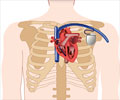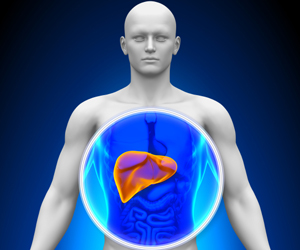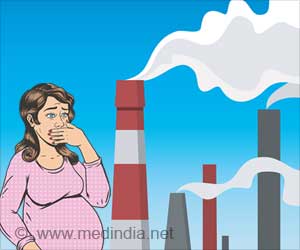Risk of out-of-hospital cardiac arrest (OHCA) increases several folds from short-term exposure to low concentrations of delicate particulate matter PM2.5.

‘Our study supports recent evidence that there is no safe level of air pollution - finding an increased risk of cardiac arrest despite air quality generally meeting the standards.’





The study led by the University of Sydney concludes that worldwide, standards should be tightened; the implications also point to the need for cleaner energy sources.
The findings publish today in the high-impact journal The Lancet Planetary Health.
The corresponding and senior author, from the University of Sydney School of Medicine, Professor Kazuaki Negishi, said previous research into air pollution and acute cardiac events had been inconsistent, especially at air concentrations that met or bettered the World Health Organization (WHO) guidelines.Inconsistencies in previous data were addressed through the size and robustness of this study, which found that more than 90 percent of OHCAs occurred at PM2.5 levels lower than the WHO guideline (and Australian standard level), a daily-average of 25 micrograms per cubic metre (μg/m3).
As well, 98 percent of OHCAs happened at levels lower than the Japanese or American daily standard level of 35 μg/m3. "Out-of-hospital cardiac arrest is a major medical emergency - with less than one in 10 people worldwide surviving these events - and there has been increasing evidence of an association with the more acute air pollution, or fine particulate matter such as PM2.5," said Professor Negishi, a cardiologist and Head of Medicine, Nepean Clinical School, at the Faculty of Medicine and Health.
"We analysed almost a quarter of a million cases of out-of-hospital cardiac arrests and found a clear link with acute air pollution levels. "Our study supports recent evidence that there is no safe level of air pollution - finding an increased risk of cardiac arrest despite air quality generally meeting the standards.
"Given the fact that there is a tendency towards worsening air pollution - from increasing numbers of cars as well as disasters such as bushfires - the impacts on cardiovascular events, in addition to respiratory diseases and lung cancer - must be taken into account in health care responses."
Advertisement
The paper concludes that there is an "urgent" need to improve air quality. "As no boundary exists in air quality among countries, a global approach to tackle this crucial health issue is necessary for our planet," the authors state.
Advertisement
The researchers found a 1- 4 percent increased risk associated with every 10 μg/m3 increase in PM2.5.
Put another way, Sydney has recently been experiencing increased air pollution because of bushfire smoke and, on its worst day PM2.5 surpassed the standard of 25 μg/m3 to jump to more than 500 μg/m3 in the suburb of Richmond, comparable to levels of continuous cigarette smoking.
There are about 15,000 OHCAs annually in Australia so in a hypothetical situation, if there is a 10-unit increase in the daily average of PM2.5, it could lead to another 600 OHCAs resulting in 540 deaths (10% survival rate globally).
The Lancet Planetary Health paper compared OHCA that occurred up to three days after the air pollution recorded; however, the effects on the heart can occur up to five-seven days after acute air pollution, Professor Negishi says, so the entire cardiovascular impacts could be worse than indicated.
Also analysed were the impacts regarding sex and age. Although the impacts did not divide along gender lines, for people aged over 65, PM2.5 exposure was significantly associated with incidence of all-cause OHCA.
The data revealed an association between short-term exposure to carbon monoxide, photochemical oxidants and sulphur dioxide and all-cause OHCA but not with nitrogen dioxide. Professor Negishi explains that it was likely that the levels of nitrogen dioxide, for example from car emissions, were not high enough to result in OHCA.
Adding to known impacts of air pollution on cardiovascular mortality generally, this study plugs important gaps in knowledge about the effects of short-term exposure to acute air pollution on OHCA.
The authors state: "Combined with air quality forecasts, our results can be used to predict this emergency condition and to allocate our resources more efficiently".
Source-Eurekalert










